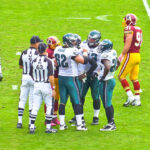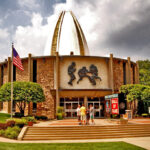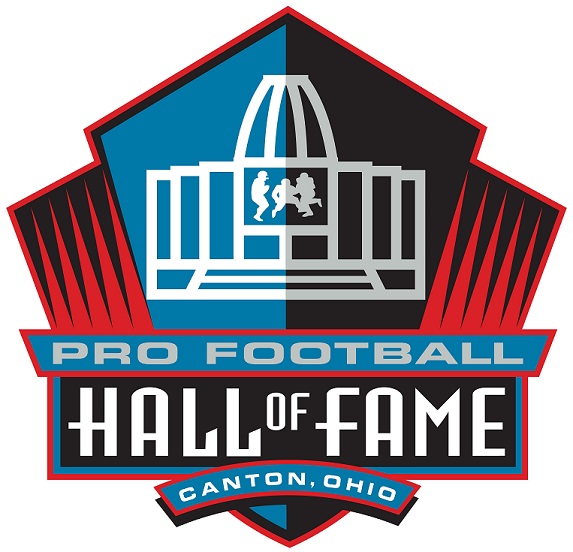It’s often said that quarterback is the most important position in sports. That plays out in the contracts they receive and in the credit or blame they get when their teams win or lose.
That makes it all the more obvious to me that this year’s class of QBs was really more flash in the pan than sure thing. So to the fans of the teams who successfully acquired the “Big Four,” don’t be utterly surprised if one or more of your organizations is back again in two years still seeking the franchise signal caller every team desires.
I’ve seen teams like the Vikings, for example, criticized for passing on him not just once, when they traded back from eight to nine and left him on the board to take athletic LB Anthony Barr, but twice – the second time being when Cleveland outbid them in their effort to move up to pick 22.
Also catching some heat are the Texans for waiting passively at the top of the second round and not protecting their ability to get Teddy Bridgewater in the latter.
But how much did those teams really want those guys? There were two scenarios playing out regularly in mock drafts leading up to this weekend. In one, “experts” said when teams without a franchise QB have a chance to grab one there’s no way they turn it down. Some of those mocks even had a fifth QB, either AJ McCarron or Jimmy Garroppolo, sneaking in as a first-round pick.
In the other, “experts” said teams didn’t appear to be all that impressed with any of the top QBs in what was supposed to be a deep QB draft.The closer to the draft it got, the lower those guys were projected to be selected.
And ultimately the spots where teams did choose those guys indicates that the second scenario was the real one. Three of the four first-round projected guys fell to – 22nd, 32nd and 37th respectively – are further evidence that teams were pretty “meh” when it comes to whether the class of 2014 could really solve their long-term signal-calling situations.
Let’s look more deeply. Outside of Blake Bortles, who went to a Jacksonville team equally as desperate to create some excitement and ticket sales as to find their QB of the future, none of the top four went anywhere near as high as they were projected to when the college season ended.
Ultimately there were 14 QBs chosen. Nine went between rounds four and six. Bridgewater had for a long time several months ago been slated as the top pick overall and if the Vikings hadn’t swooped in, he likely would have fallen to the top pick in the second round.
Manziel’s status has been all over the board over the last year, but in the overinflated expectations of “experts” and of the hype-spreading ESPN analyst crews heading into draft day, it was unlikely he’d make it past the first half-dozen or so picks. Instead, Cleveland was able to grab him not by using its first pick or trading back a couple with the number four slot, but by moving up a handful of spots with its second day-one pick.
The other “big four” QB, Derek Carr, fell to the second round where he was only joined by the rising Jimmy Garroppolo.
Then, look no further for evidence of how flawed teams saw this class as: three very successful SEC QBs expected to go in round two fell not just a round or two but all the way to the fifth and sixth rounds.
Fans of teams across the league can get into whatever lather they want over whether their teams made fatal mistakes by passing over these supposed franchise QB prospects. But it’s clear to me after looking through how the draft played out – none of these QBs are sure-fire, top-notch franchise-saving QBs. There were a lot of prominent names with a lot of college pedigrees, but this was a flawed group from top to bottom. So even the teams that did acquire them likely go in with eyes wide open – the guy they say they wanted all along might actually turn out to be just that. But in all likelihood, one or more of them will be slogging through more scouting reports in hopes that the next guy they take turns out better than the one they picked up this weekend.







It was pointed out on ESPN draft coverage that there are currently more QBs starting in the league as FA then those picked in the 1st round. That says all in terms of draft predictions, projections and hype of QBs in any draft.
The value of QBs has been overinflated in the draft for a while. This year’s draft may have been a bit more realistic in terms of correct draft placement.
I have always questioned the concept of value when it comes to draft picks since even though the players are assigned a value the determination of that value or ranking is always very subjective. For example the difference between a player ranked at 15th in the first round compared to one ranked 20th is say 6.4 to 6.2, well within the subjective margin of error within these rankings. Yes you should not pick a player ranked at 6.0 and in the 2nd round with the 10th overall pick, but once you get to the mid of the 1st round, and especially beyond round 2, the relative values of players becomes more meaningless. What really matters (especially today with assigned rookie salary slots) is whether or not the player turns out to be successful, regardless of whether they were picked in 1st, 2nd or later rounds and whether they were selected at or above their slotted “value” in pre draft rankings. No one really know whether Johnny Football would have been a better pick or value at 6th compared to 22nd as we will only really know as his career plays out, he has as much chance as being a bust or a great value pick regardless of his draft position.
I agree that the gradings are so close that a lot of the order doesn’t matter. By value, I meant that the value of the position of QB has been overinflated.
I am not so sure that the value of the position of QB has been overinflated, many still claim that without a top QB teams simply cannot win in the NFL today. Think of the last SB winning time that had an average or below QB. There is a reason teams spend so much time and effort on the position including evaluating college QBs and free agents.